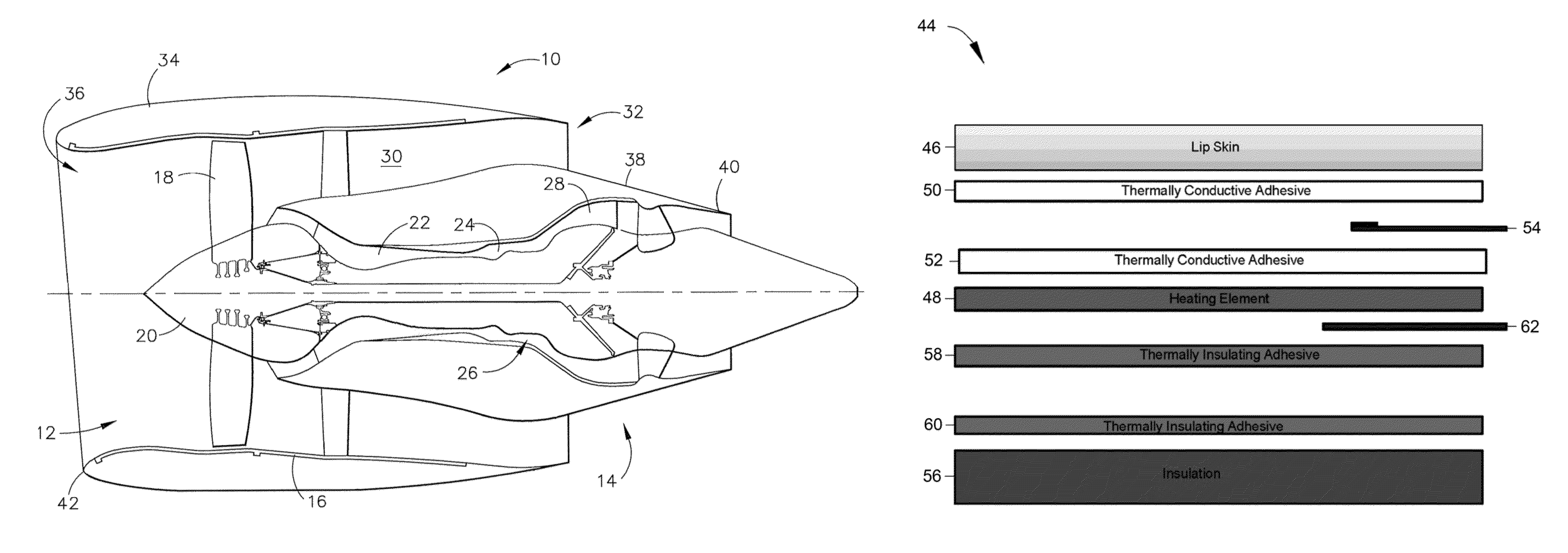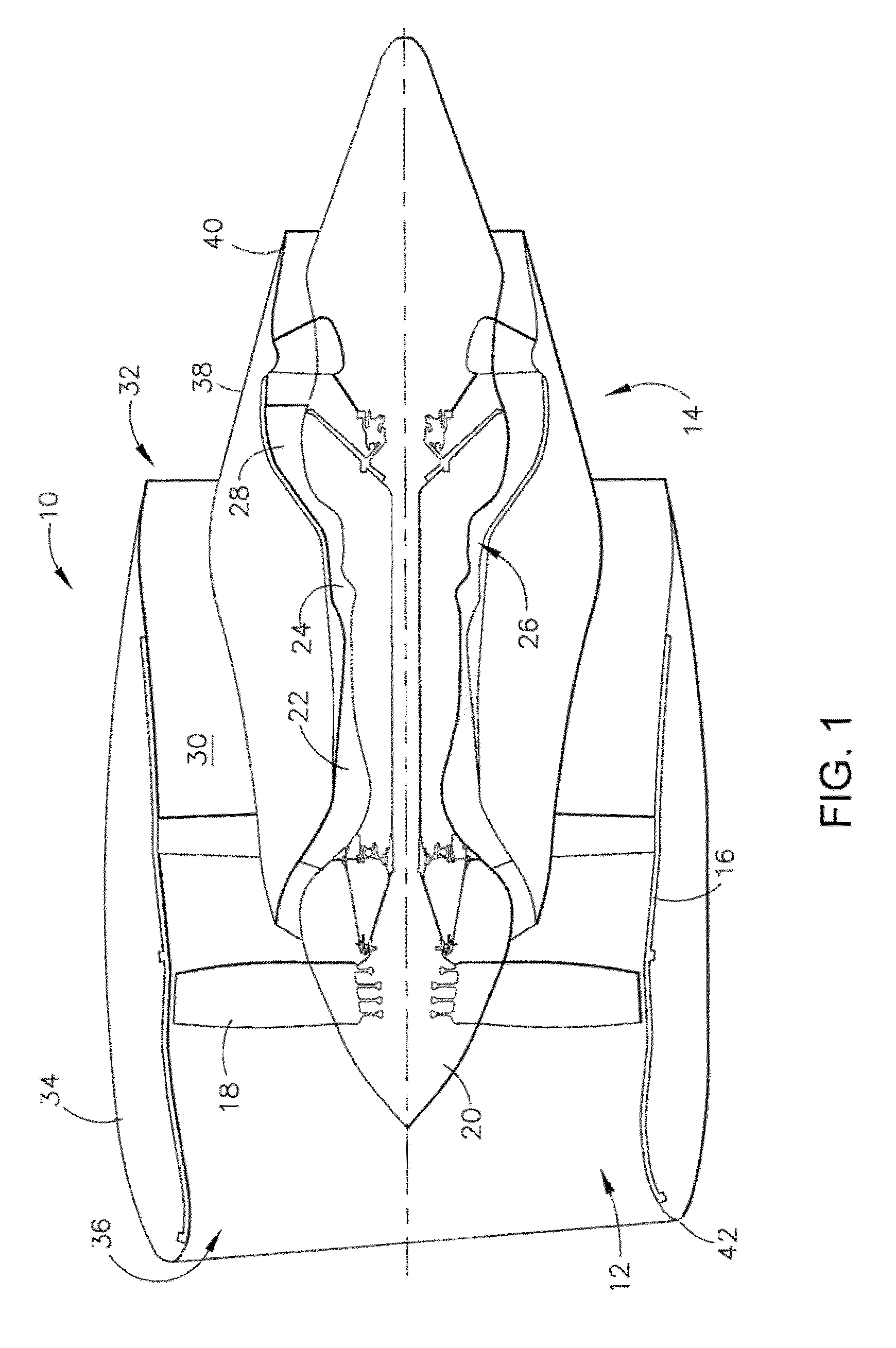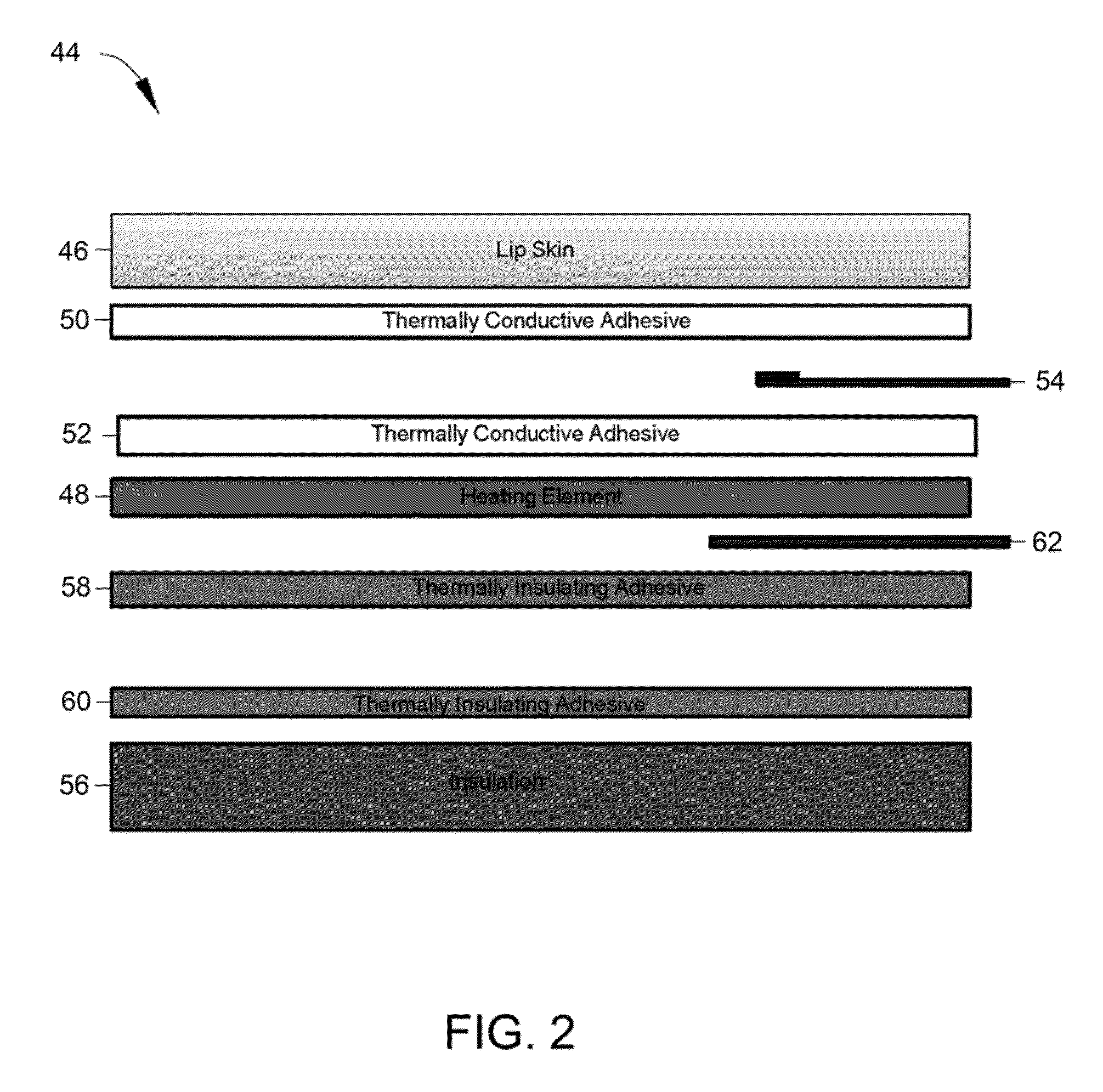Aircraft ice protection system and method
a technology for aircraft engines and ice protection systems, applied in the field of aircraft engine surface anti-icing and deicing systems, can solve the problems of high cost of chemical de-icing agents, inability to operate in the system, and excessive energy required for de-icing and continuous anti-icing operation of large aircraft engines, so as to improve heat transfer
- Summary
- Abstract
- Description
- Claims
- Application Information
AI Technical Summary
Benefits of technology
Problems solved by technology
Method used
Image
Examples
Embodiment Construction
[0019]The present invention is generally applicable to components that operate within relatively low temperatures environments that cause the components to be susceptible to detrimental accumulations of ice. While various applications are foreseeable and possible, applications of particular interest include those that require relatively light-weight components, for example, components of aircraft gas turbine engines. Of particular interest are fan nacelles of high-bypass turbofan engines such as represented in, for example, in FIG. 1.
[0020]FIG. 2 represents the cross-section of a heating element architecture 44 suitable for use in ice protection systems, for example, ice protection systems 70 shown in FIG. 3 through 6 in accordance with certain embodiments of the present invention. FIG. 2 also represents a lip skin 46 of a nacelle inlet lip, for example, the inlet lip 42 of FIG. 1. As such, the lip skin 46 is not part of the heating element architecture 44 and is shown only for clar...
PUM
 Login to View More
Login to View More Abstract
Description
Claims
Application Information
 Login to View More
Login to View More - R&D
- Intellectual Property
- Life Sciences
- Materials
- Tech Scout
- Unparalleled Data Quality
- Higher Quality Content
- 60% Fewer Hallucinations
Browse by: Latest US Patents, China's latest patents, Technical Efficacy Thesaurus, Application Domain, Technology Topic, Popular Technical Reports.
© 2025 PatSnap. All rights reserved.Legal|Privacy policy|Modern Slavery Act Transparency Statement|Sitemap|About US| Contact US: help@patsnap.com



